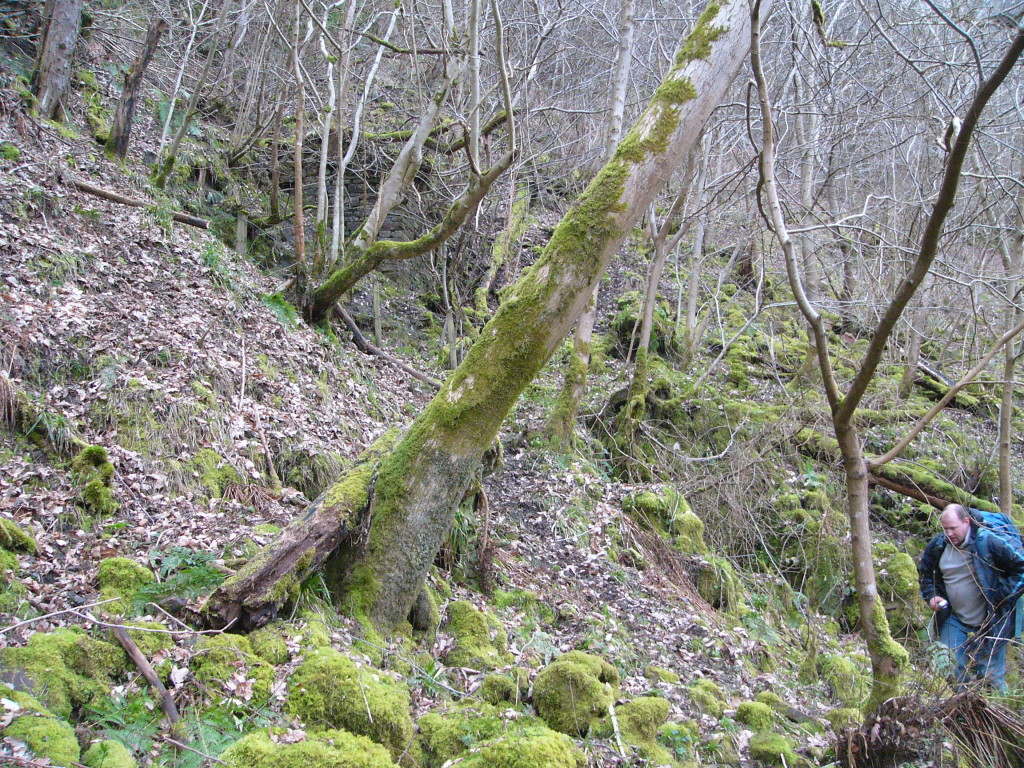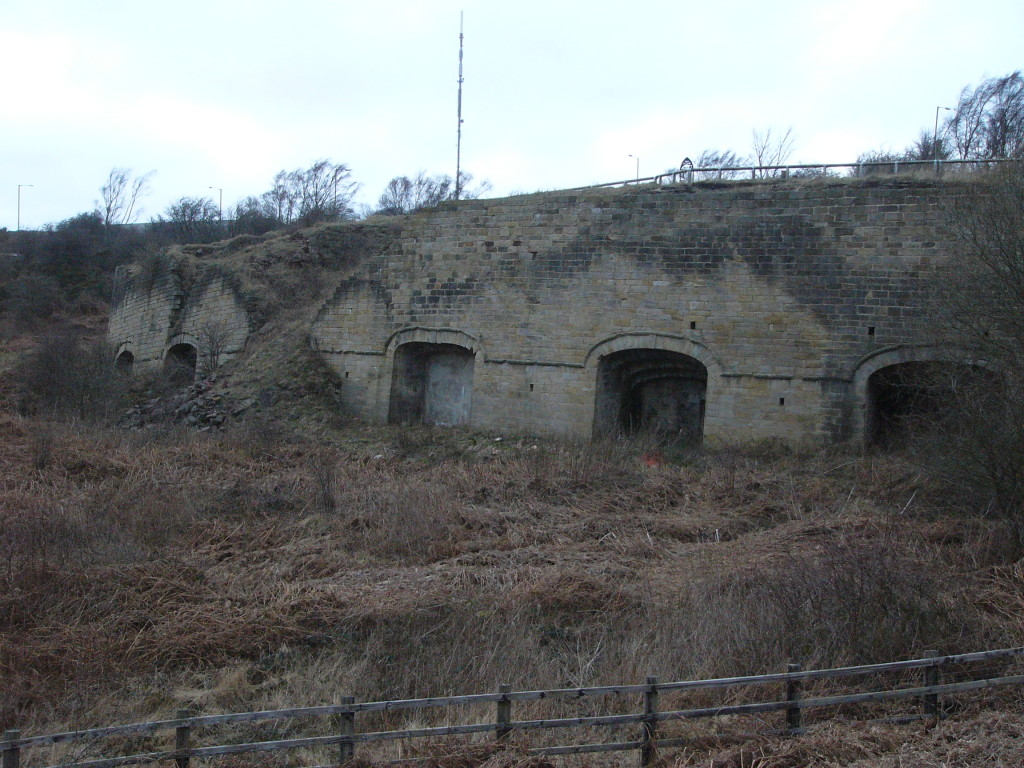Engine House Ground Floor:
Engine House First Floor:
Engine House Second Floor:
Boiler House:
Store Room + Blacksmiths:
Bowes Railway was originally a colliery railway built to carry coal mainly from pits in north west Durham to the Tyne at Jarrow. The earliest section was designed by George Stephenson and opened on 17 January 1826, making it one of the world’s first modern railways. It was 15 miles long when completed in 1855. Each end was locomotive worked; the six mile middle section consisting of rope worked inclines with very steep gradients.
At its peak, the Railway handled over 1 million tons of coal per year and remained virtually intact until 1968. Between 1968 and 1974, most of the line was closed until only the last 3.5 miles between Monkton and Jarrow staithes were operated by the National Coal Board. However, the original 1826 section between the Black Fell bank head and Springwell bank head was acquired for preservation in 1976 by Tyne and Wear County Council. This comprises Blackham’s Hill West and East inclines, which are operated by a stationary haulage engine. It is the only working preserved standard gauge rope hauled railway in the world. In 1977, the Railway’s Engineering and Wagon Shops at Springwell were added to the scheme, providing the facilities needed for maintenance.
Joiners Shop:
Outside The Workshops:
Mining & Underground Transport Exhibition:
Tub Repair Shop + Engine Shed:
Springwell Incline + Colliery Site:
The following notice appeared in the Yorkshire Post on June 12th 1922.
Dismantlement Sale
GROSMONT (ESKDALE) MINES.
Grosmont, R.S.O., Yorkshire (on the Whitby and Stockton Railway).
A. T. and E. A CROW. F.A.I., Auctioneers, Sunderland. have been
honoured with instructions from the Owners to Sell by Auction, on THURSDAY,
15th June, 1922,
The Whole of the Valuable PLANT and MACHINERY, comprising :-
100 Tons F.B. Rails, 22 and 26 lb. per yard.
40 Tons Bridge Rails. 181b. per yard,
4 Sets Points and Crossings, 12 Sets C.I. Points,
Crossings and Sweeps.
60 Sets Right and Left Hand Twynes.
Quantity Fishplates. Bolts, and Nuts.
31 Sets Blackett and Martin’s Patent Rotary Rock Drills.
115 SPLENDID W.I. ORE STONE TUBS, 2ft. gauge,
Steel Wheels and Axles. 3ft. 6in. x 2ft.6in x 1ft. 6in.
5 Shale Tubs. 2ft. gauge.
100 Smallman’s Tub Wagon Clips for endless rope.
2 Excellent 5ft. Incline Sheaves with double screw brake.
Nearly new endless incline winding rope, 2 3/4in. dia.;
100 new Hickory pick shafts. 80 pick shafts with sockets.
100 4lb. steel hammers, new drill steel, 100 pinch bars.
Platelayers’ hammers, quantity W.I. wagon couplings. 3 link. 1 1/8 in dia. quantity
of copper prickers and stemmers. copper wire, ratchet braces, steel chisels
and punches, nearly new circular bellows. 2ft. 3in. dia.,
stocks, taps and dies, 60 W.I. sprags, 2 navvy barrows,
quantity of rail dogs and nails, blacksmith’s new iron,
6in. vice, new rivets and bolts, grindstone and frame,
electric gongs and telephones, spanners, 1,000 wood
sleepers, galv. tank 3ft. by 2ft. by 2ft., rape oil. tub
grease, deals and battens.
Wooden Erections – P.P. office and miners room. 36ft x 13ft x 9ft.;
wooden hut. 8ft. 9in. x 6ft. x 8ft.;
P.P. tip shed. 85ft. 6in. x 29ft.; corrugated weigh
cabin. 12ft. 6in. x 9ft.. matchwood boarding.
THE CONTENTS OF BLACKSMITHS AND
PATTERN SHOPS AND THE STORES.
Sale to commence One o’clock precisely.
Catalogues now preparing and obtainable from the
Auctioneers, Manor House. Sunderland.
Telegrams on Day of Sale. “Crow,” c.o. Ironstone, Grosmont. Yorks
Telephone: 731 Sunderland.
Seven members had a very successful foray into N.W. Durham to look at several assorted industrial sites. Most travelled to the meeting place via the A68 which passes through Tow Law; at 9.30 am on a cold and windy Saturday morning Tow Law was like a post-Apocalyptic film set.
From the meeting place at the original site of Rowley Station we moved to Castleside picnic site (NZ078484) which is on the site of a lead smelting mill, only part of the sharply-curved flue of which remains on the hillside above. From here we walked along a track to Dene Howl and the site of Healeyfield lead mine (NZ068486), at one time a very extensive site of mining and mineral processing and now a farmstead. First we climbed onto a linear spoil heap which led us to a single-storey building which was apparently the office originally then later a cottage. Now very derelict but at least the roof was intact. Extensive clearance of the mine site over the years has left only the winding house and a few scattered remnants of what was once a very productive site with a shaft about 400 feet deep.
The winding house at Healeyfield.
The winding house is square in plan, built of stone with brick details, and retains quite a good corrugated sheet roof. It appears to have been much altered during its life working for the mine but is still in reasonable condition although empty and disused with no remains of engine foundations. Judging from the blocked openings in the front wall it may have both wound and pumped the shaft originally.
Nothing could be seen of the infilled shaft, Cornish pumping engine, blacksmith’s shop or even the Horse Level.
Walking further on, passing a couple of metal detecting enthusiasts, we followed the road down into a narrow valley where a sharp bend on the hillside is supported by a well-conserved limekiln. Eventually leaving the road to follow a track into the wood we found an old leat which we followed downstream to a suitable sheltered place for lunch while Dave scouted ahead by traversing across a cliff face above the raging torrent of the local stream.
And so we came to Hisehope Groove (NZ054487) which has been a pumping shaft for the southern end of the Silvertongue vein. Clinging to the steep valley side is a pit for a water wheel which has operated a rocking beam driving spear rods in an adjoining shaft now some 100 feet deep but covered by a steel grill. The shaft is dry although only a few yards from the stream and possibly the water was lifted into a drainage adit which may be the one now outflowing near the afore-mentioned limekiln.
Hisehope Groove pumping shaft. Wheel pit to left, support for rocking beam in middle, grated shaft to right.
As Dave was with us some modest pruning of obscuring vegetation took place to permit improved photography of this well preserved and interesting site. Presumably because of the restricted nature of the site the pit is in line with the shaft so to allow the rocking beam to align correctly it has been set at a distinct angle in plan, its pivot point being a most interesting structure at one end of the pit which has been partly curved to accommodate the water wheel.
The outline of a nearby ruined building was associated with the site, and some distance away is a stone pier and wall either side of the stream which may be part of it as well, or not as the case may be.
 Silvertongue Mine. The two shafts and the platform with possible water wheel pit at upper left. Ore chute and second water wheel behind the intrepid explorer on the right.
Silvertongue Mine. The two shafts and the platform with possible water wheel pit at upper left. Ore chute and second water wheel behind the intrepid explorer on the right.
From here we next headed north down a path and over a footbridge past a hovel in a clearing, complete with “Beamish Museum” landrover outside. Eventually we found Silvertongue Mine (NZ057492), a most intriguing and extensive site on the south bank of the River Derwent and well off the beaten track. Ruined stone buildings with a leat water wheel pit occupy the east end of the site from which a level route heads west along the narrow river bank below the steep valley side. The mining site comprises a stone platform perched high up the hillside next to a shaft covered with a steel grill although it appears run-in. Below the platform appears to be a small wheel pit then lower down another and larger run-in shaft. Nearby is a possible ore chute then another and larger wheel pit beside the river, possibly used for winding and crushing. Between the two main parts of the site are several small rectangular pits which may indicate determined efforts made to recover as much of the mineral as possible as the vein had a high silver content. There are also retaining walls and a couple of potential bouse teems but altogether an inconclusive site worth much more investigation. Apparently there is an adit here but we didn’t find it.
After a lengthy trek back to Castleside we drove through re-vitalised Consett, its dirty and grimy industry replaced by clean and shiny shopping malls, to reach Stony Heap (NZ147515) with its fanhouse and minewater treatment lagoons. A shaft, 160 feet deep, was sunk here in 1938 to enable working of the Main Coal seam from Eden Colliery. It was expanded to become a man-riding, pumping and ventilation shaft while coal was raised via the original site dating from 1844. Closure came in 1980 since when the buildings were all demolished and lagoons built to treat minewater flowing out of a drift; 14 coal seams were worked here and ironstone too. But bats took over the large concrete fanhouse which was left intact, apart from the motor room. The fan was a single-inlet Sirocco of which the outer casing at least still remains, and its massive concrete house had airflow reversal capability.
Stony Heap fanhouse. Capped shaft to left beneath green pole. Fan casing is the green curved metalwork to right. Motor room has been demolished. Fanhouse said to be infested with bats which is why it remains.
As twilight darkened we found the big block of lime kilns at Bantling (NZ151519) built by the Stanhope and Tyne Railroad Co. in 1835. These are large and built of a superior design and construction as befitted a premier railway company, as it thought of itself at the time. Recently conserved, the kilns can be admired from a viewing platform complete with iron seats and explanatory signs among abandoned ironstone mining heaps lining the hillside.

Bantling lime kilns.
The final three members then graced “Charlie’s Chippy” with their presence in Annfield Plain before a moonlit journey home.
Simon Chapman
Hon. Sec.
CMHS.